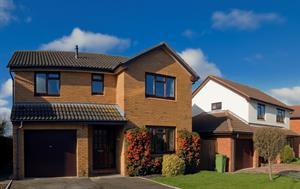
Stamp duty reforms explained Significant changes to the Stamp Duty Land Tax (SDLT) recently announced in the Chancellor’s Autumn Statement means that many people will now pay considerably less property tax than before.
The changes, which are designed to encourage new buyers onto the market, mean that an estimated 98% of those purchasing propertywill now pay either less or the same amount of stamp duty as they would have done previously.
The old system of fixed rates was deemed to be unfair as you had to pay the appropriate percentage for the relevant threshold on the entire value of a house.
This meant that when purchasing a house that was only slightly more expensive than the bracket allowed, buyers were faced with a significant increase in stamp duty – this was often reffered to as a “cliff edge” system.
However, recent changes announced by the chancellor mean that buyers will no longer be subject to large spikes in Stamp Duty and rather will benefit from a gradual spread when a properties price enters into another bracket.
Under the old SDLT rules, a house costing £180,000, for example, would have been charged at a 1% fixed rate on the total amount – ie £1,800.
However, with the recent reforms only the part of the property price that fell above the £125,000 bracket will have the duty applied to it.
In the case of the £180,000 property, this means 2% of £55,000 - £1,100, meaning the buyer would save £700.
Only people buying a house worth more than £937,000 will pay more stamp duty than previously.
This will no doubt come as great news for buyers, who have the potential to make large savings, but also for sellers, who will see increased interest in their properties, and will no longer have to artifically lower the price of their property if it should be slightly over the nearest stamp duty threshold.
The new thresholds are as follows: Purchase price Stamp duty rateUp to £125,000 0%£125,000.
01-£250,000 2% on the part of property price within this threshold£250,000.
01-£925,000 5% on the part of property price within this threshold£925,000.
01-£1,500,000 10% on the part of the property price within this threshold£1,500,000.
01+ 12% on the part of the property price within this threshold For further information about the selling and moving home, you can read our online guide to selling your home.
Share on social media